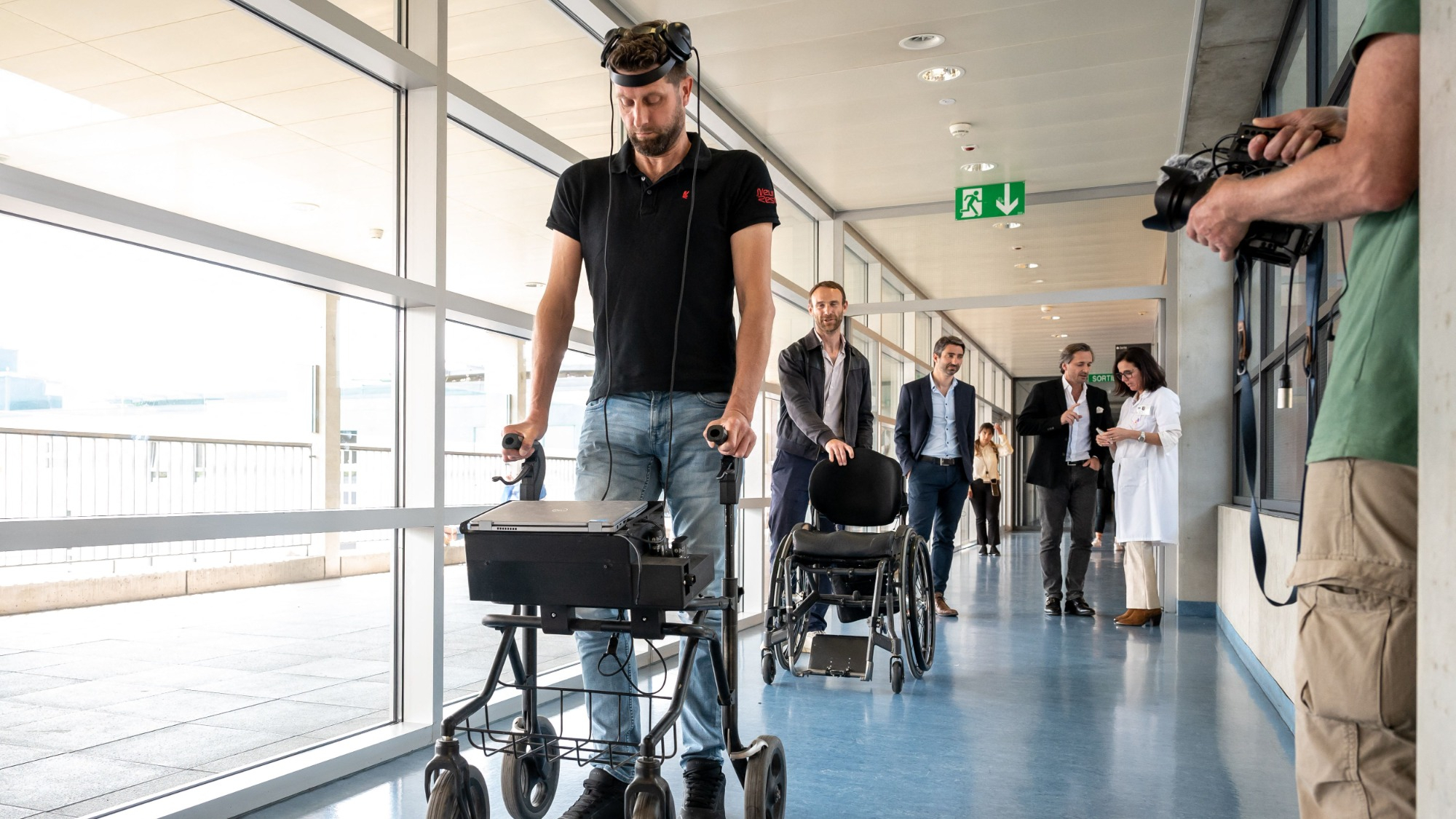

In a groundbreaking new study published earlier this month in the journal Nature, a team of neuroscientists and other researchers detail how electrical devices implanted into the brain and spinal cord of a paralyzed man have helped him walk and even climb stars.
[Related: The slow, but promising progress of electrode therapy for paralysis.]
The implants communicate wirelessly and fuse together two experimental technologies that are being developed to treat paralysis. One of the devices is inserted into the skull and sits above the brain’s surface. It decodes the patterns involved in walking and sends a signal to the second device that is implanted in the spinal cord. The spinal cord is then stimulated by the electrodes in a precise sequence that activates the leg muscles needed to walk.
According to the study’s authors, the devices provide a “digital bridge” between the brain and the spinal cord that bypasses the injured areas of the spinal cord. The brain-spine interface uses an artificial intelligence thought decoder to read the brain’s intentions. These intentions are detectable as electrical signals in the brain and then match them to muscle movements.
The patient in this new study is Gert-Jan Oskam, a 40-year-old man from The Netherlands who was paralyzed in a cycling accident in 2011. Oskam received an experimental spinal-cord stimulator in 2017 that retired his ability to walk, according to CEO Dave Marver of Onward Medical. The Netherlands-based biotechnology company manufactures the spinal cord device used in the study.
“We’ve captured the thoughts of Gert-Jan, and translated these thoughts into a stimulation of the spinal cord to re-establish voluntary movement,” study co-author and spinal cord specialist at the Swiss Federal Institute of Technology, Lausanne Grégoire Courtine, said in a press briefing according to The New York Times.
Brain-computer interfaces like these allow for more natural movement than just using spinal cord stimulation alone. Oskam now can even pause mid-gait, adjust his stride, and navigate on irregular terrain like stairs.
Previously, the Onward Medical device was used in a study that restored the ability to walk to nine patients by mapping out the neurons that are associated with the body’s complex commands for walking. Marver told The Washington Post that the company is likely five years away from being able to commercialize a system like the one used in this study and that his aspirations are even broader. “Ultimately, our vision is that a person with paralysis will be able to visit the doctor and select what function they want to restore,” he said.
[Related: I became a cyborg to manage my chronic pain.]
The brain implant that was used in this study was developed by Clinatec and a French government-backed research institute called CEA.
Some of the limitations to this work include that the brain’s subtle intentions are difficult to distinguish and the same brain-spine interface used for walking, may not be suitable for restoring movement in the upper body. The treatment is also invasive, requiring multiple surgeries and hours of physical therapy. The system, as it currently stands, does not fix all spinal cord paralysis.
This study is one of a number of spinal cord injury treatment advances in recent years. In 2016, a group of scientists restored paralyzed monkey’s ability to walk. In 2018, scientists figured out a way to use electrical-pulse generators to stimulate the brain and allowed partially paralyzed people to walk and ride bicycles again.
